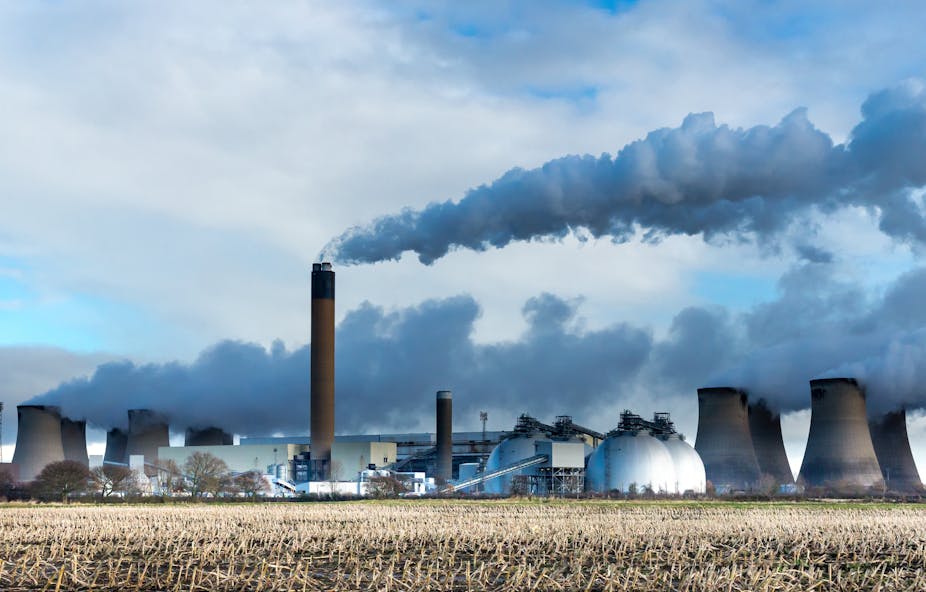The UK’s efforts to develop facilities to remove carbon emissions from power stations took a step forward with news of a demonstrator project getting underway at the Drax plant in north Yorkshire. Where most electricity carbon capture projects have focused on coal-fired power, the Drax project is the first to capture carbon dioxide (CO₂) from a plant purely burning wood chips – or biomass, to use the industry jargon.
This so-called Bio Energy Carbon Capture and Storage (BECCS) demonstrator is only a pilot project; it covers just a tiny proportion of emissions from the 4GW plant and Drax has no plan yet for storing the captured gas. But coming after a decade in which various other UK carbon capture initiatives and government competitions have ended up scrapped, it is certainly progress.
Some specialists believe this technology has a bright future in the UK, envisaging big wood-fired power plants whose carbon emissions are prevented from returning to the atmosphere. Other countries are looking at it seriously, too, and Drax and its partners have been talking up the prospect of eventually achieving “negative emissions” at the plant in Yorkshire. But this is fundamentally misleading. Without wanting to reject carbon capture out of hand, it is time to get realistic about what can be achieved with this technology.
The carbon capture delusion
The logic of the negative emissions argument is that burning wood is “carbon neutral” because trees absorb CO₂ from the atmosphere in the first place, and you are simply releasing it back. When you combine this with a carbon capture facility, it is argued, you are therefore removing CO₂ from the atmosphere overall.
But this view considers the process of burning wood in isolation. It ignores, just as an example, a wider chain of activities including planting and harvesting the trees, converting the wood into chips and then shipping them to the power plant – not to mention storing and using the captured CO₂ once the wood has been burned.

There is also a misconception that burning wood produces only CO₂ – a BBC News reporter was saying as much the other day. But if this were the case, we would not need to separate CO₂ from other flue gases. Some of the carbon in the wood could become carbon monoxide, for instance, which, if not captured, would indirectly contribute to levels of greenhouse gases in the Earth’s atmosphere. The process also produces other noxious emissions, such as volatile organic compounds and oxides of nitrogen, which are responsible for acid rain.
Too many people also tend to see wood as better than oil or coal because the amount of CO₂ produced by burning a given unit is much lower for wood. But this overlooks the fact that you get considerably more heat from burning a unit of oil or coal than from wood. In other words, you have to burn much more wood to produce the same amount of heat, so the carbon emissions are actually much more than they appear. This leads people to greatly underestimate the amount of land we will need for trees if biomass power is to become a much bigger part of the energy mix. The Drax plant alone uses more wood than the UK produces every year, for instance.
The blinkered thinking around carbon capture also goes way beyond biomass power plants. There are now 43 carbon capture facilities either operating or in development – ten in the US, followed by Canada and Norway. Very few are attached to power plants so far, with most instead removing CO₂ from oil fields or gas processing plants. But generous new subsidies in the likes of the US are making the industry optimistic about carbon capture in the power sector regardless of which feedstock is burned.
Across the board, there is the same tendency to ignore the carbon emissions in everything from coal/gas/oil extraction to CO₂ storage. We also hear very little about the solvents traditionally used to separate the CO₂ from the rest of the combustion gases. These amines are highly corrosive and bad for the environment, plus there are CO₂ emissions from producing them in the first place.
A different approach
My point is not that we should be against carbon capture plants; the technology is much needed, and pilots like the one at Drax are important for possibly scaling up the process and measuring what is achievable. But when scientists conduct these measurements, they need to consider the complete chain to look at all of components involved – including, in the case of wood, the land used for the trees, and the consequences of deforestation.

We also need much more discussion and research into which solvents are the most environmentally friendly for gas separation: Drax claims to be using a new solvent with environmental benefits, so it will be interesting to see what the results look like down the line.
Clearly, our society needs energy. We would never be able to sustain ourselves if we eliminated fossil fuels completely. Capturing carbon dioxide emissions certainly has a role to play in the energy systems of the future, but it needs to be appraised in a way that looks at the whole picture.
The reality is that if the UK and EU are serious about being completely carbon neutral by 2050, it will have to use a mixture of methods and cut back more aggressively on the emissions being produced in the first place. This is always going to be more efficient than any attempts to put the genie back in the bottle afterwards. Regardless of what anyone says about technological solutions to the carbon problem, it is almost impossible to get away from this basic fact.

